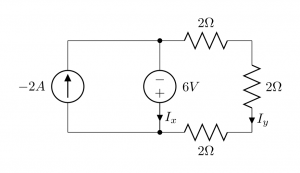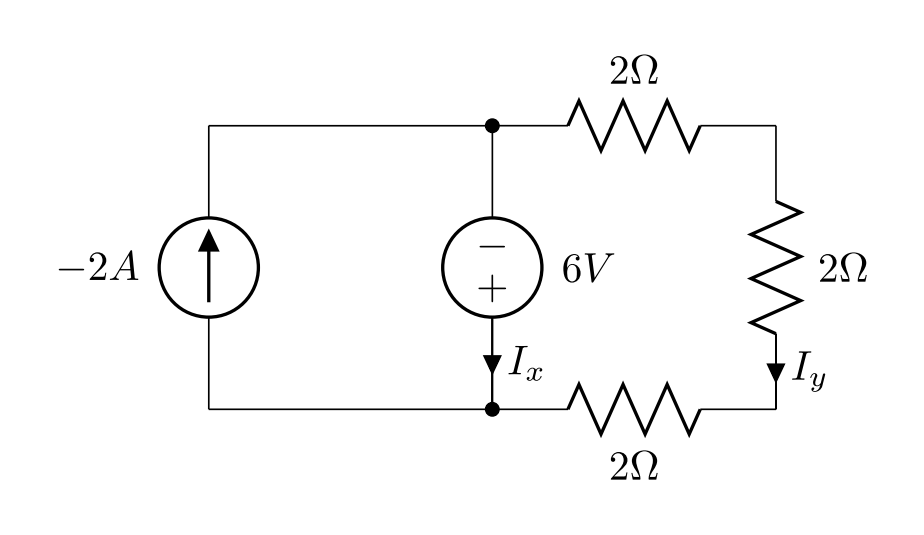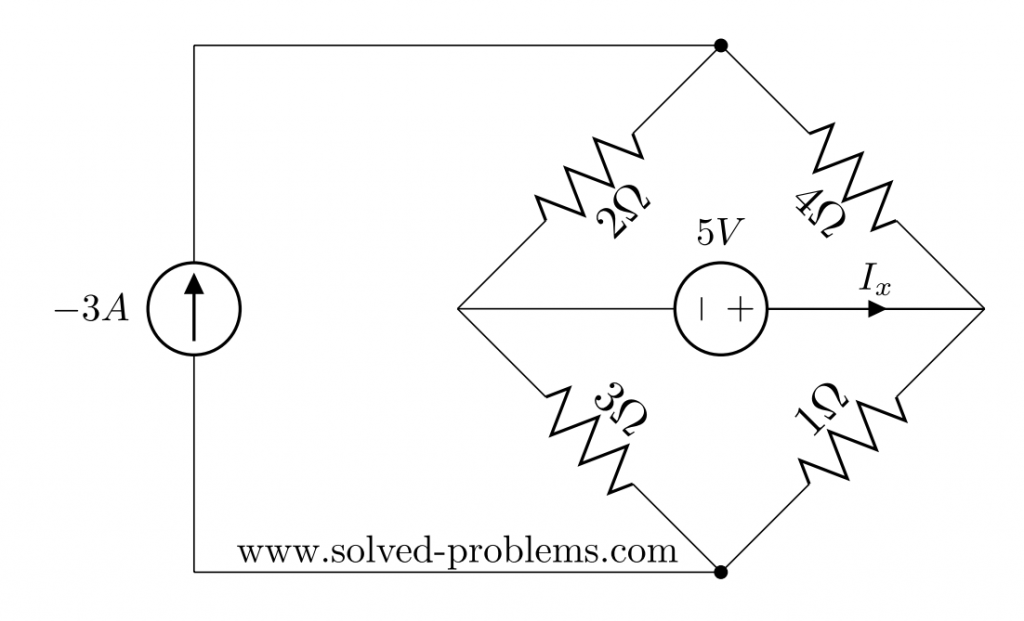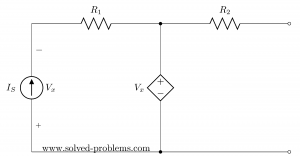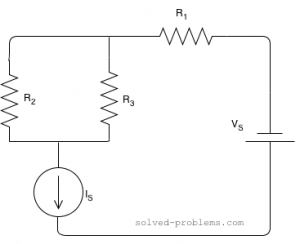Problem
Solution
Three resistors are in series and their equivalent, ![]() , is parallel with the voltage source. So, according to the Ohm’s law:
, is parallel with the voltage source. So, according to the Ohm’s law: ![]() . The negative sign comes from the direction
. The negative sign comes from the direction ![]() .
.
Applying KCL at the bottom node:
![]() .
.
The lucky winner of the Electrical Circuits Contest #1 is Kunal Marwaha from UC Berkeley. I would like to say thank you to all participants and I am thinking of holding contest #2 soon. Kunal, congratulations and soon you will receive the prize by Paypal.
